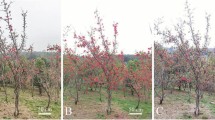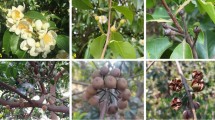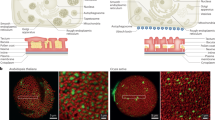Abstract
IT has been widely accepted among botanists that pollen derives nutrients from the surrounding tapetal cells as a consequence of their lytic degeneration, but recent evidence has suggested that in Tradescantia at least, the tapetum does not degenerate as early as previously supposed1–3. In this plant the tapetal cells reorganize to form a plasmodium which engulfs each pollen grain in a vacuole. At first there is no close association between the exine and the tonoplast of these vacuoles, but as the anther matures an intimate association develops. The tapetal tonoplast expands and comes to line the interbacular cavities closely, greatly increasing the area of membrane which invests the microspore.
This is a preview of subscription content, access via your institution
Access options
Subscribe to this journal
Receive 51 print issues and online access
$199.00 per year
only $3.90 per issue
Buy this article
- Purchase on Springer Link
- Instant access to full article PDF
Prices may be subject to local taxes which are calculated during checkout
Similar content being viewed by others
References
Mepham, R. H., and Lane, G. R., Nature, 219, 961 (1968).
Mepham, R. H., and Lane, G. R., Nature, 221, 282 (1969).
Mepham, R. H., and Lane, G. R., Protoplasma, 68, 175 (1969).
Maier, K., Planta, 77, 108 (1967).
Gunning, B. E. S., Pate, J. S., and Briarty, L. G., J. Cell Biol., 37, C7 (1968).
Scala, J., Schwab, D., and Simmons, E., Amer. J. Bot., 55, 649 (1968).
Kelley, C., J. Cell Biol., 41, 910 (1969).
Author information
Authors and Affiliations
Rights and permissions
About this article
Cite this article
MEPHAM, R., LANE, G. Adaptive Significance of the Sculptured Exine of Pollen. Nature 226, 180–181 (1970). https://doi.org/10.1038/226180b0
Received:
Issue Date:
DOI: https://doi.org/10.1038/226180b0
Comments
By submitting a comment you agree to abide by our Terms and Community Guidelines. If you find something abusive or that does not comply with our terms or guidelines please flag it as inappropriate.



